The padel market is forecast to experience significant growth by 2033, driven by rising consumer interest, technological advancements, and improved manufacturing capabilities that enhance equipment performance and durability.
In recent years, the popularity of padel has soared globally. This surge in interest has paved the way for manufacturers and distributors to invest heavily in state-of-the-art production techniques and innovative materials. The market trends indicate that by 2033, the padel industry will not only increase in size but will also diversify in product segmentation and technological sophistication, making it a highly attractive domain for B2B procurement managers, brand strategists, and sports retailers.
From a global perspective, several factors are fueling the expansion of the padel market. First, the sport’s enhanced visibility in mainstream media and sporting events has significantly amplified consumer interest. Second, technological improvements in equipment—especially in carbon fiber padel1 rackets and other advanced materials—offer superior performance and durability, which enhance player experience. Third, strategic partnerships and OEM manufacturing2 have led to an efficient supply chain that ensures timely production and delivery.
The rapid evolution in manufacturing, particularly with high-performance padel rackets, is driving increased product differentiation. Companies like NEX Padel have been at the forefront of this development. With a robust production line that offers variants such as Diamond, Round, and Teardrop shapes—and customizable options3 including logo printing—the ability for manufacturers to meet varied consumer requirements is greater than ever before.
Below is an overview of major factors contributing to the padel market growth:
| Growth Driver | Description |
|---|---|
| Increased Global Popularity | Rising exposure through media and international competitions fuels consumer demand. |
| Technological Advancements | Innovations in materials, e.g., 3k, 12k, and 18k carbon fiber, improve equipment performance. |
| Customization and Product Differentiation | Options like full custom tennis racket shapes, hand grip personalization, and unique color options drive sales. |
| Strategic OEM Partnerships | Collaborations with well-known brands ensure quality and efficient market distribution. |
These drivers are interconnected. For instance, global popularity fuels demand; in turn, manufacturers respond with cutting-edge technology and customized production, creating a virtuous cycle. As market share expands, so does the need for a reliable supply chain and quality assurance4—elements that are critical in B2B transactions.
Technology plays a pivotal role in shaping the future of the padel industry. Innovations in carbon fiber technology have redefined the potential of rackets. Carbon fiber, available in different grades (3k, 12k, and 18k), directly impacts the racket’s stiffness, balance, and durability. This technological shift ensures that athletes have access to equipment that meets high performance and durability criteria while allowing manufacturers to optimize production speed.
The advanced production techniques now used by leading manufacturers involve precision molding5 and high-quality finishing processes. These techniques result in equipment that performs better under pressure and provides a competitive edge in both casual play and professional tournaments.
Key technological improvements include:
- Enhanced Durability: The use of high-grade carbon fiber ensures that rackets withstand intense play, thereby increasing their lifespan.
- Precision Engineering: Advanced production techniques allow for highly accurate craftsmanship, ensuring each racket maintains a consistent standard of quality.
- Customization Capabilities: From custom racket shapes (Diamond, Round, Teardrop) to personalized prints, technology enables manufacturers to cater to specific market niches.
These improvements are not solely beneficial for athletes; they also provide a significant competitive advantage for manufacturers. For example, brand strategists within B2B organizations can leverage these technologies to differentiate their product offerings in a crowded market. This technical edge is also a vital selling point when courting premium customers and high-end retailers.
The padel market is broadly segmented by product type, material, and geography. Manufacturers continuously identify niches that allow them to bolster their market share. At NEX Padel, the product line includes customized and standard models of rackets as well as complementary equipment like padel balls crafted from advanced materials. Such segmentation, especially the availability of pressurized padel balls with 45% and 57% wool options, illustrates an integrated approach toward product diversity.
- Diamond Racket: Recognized for its power and precision, it is tailored for players who have an aggressive play style. The shape naturally amplifies the impact force during strokes.
- Round Racket: Offers balanced performance with emphasis on control and comfort, making it popular among intermediate players.
- Teardrop Racket: A hybrid choice delivering both power and control, appealing to a broader range of players.
These diverse product lines ensure that manufacturers can cater to every skill level, from amateurs to professionals. Moreover, the ability to perform customizations such as printing logos on rackets, hand grips, and handle covers serves as an important marketing tool for brands looking to stand out.
A practical benefit of this segmentation is found in the competitive pricing strategy. By offering a range of products from cost-effective options to high-performance custom models, companies can meet various budgetary requirements while maintaining quality standards. This market stratification creates ample opportunities for retailers and distributors in the B2B sector to build a diverse inventory tailored to specific consumer segments.
It is essential for procurement managers and brand strategists to understand the competitive dynamics in the padel market. The competitive landscape is characterized by a mixture of established players, OEM manufacturers, and emerging companies innovating with new materials and processes.
- Supplier Track Record: Evaluate manufacturers based on their production capabilities, customization options, and delivery performance. Proven track records, such as those demonstrated by NEX Padel, indicate reliability and consistent quality.
- Market Position: Analyze the market share held by potential suppliers. Companies that have secured contracts with well-known brands (e.g., Hirostar, Reebok, and Starvie) are often more stable and capable of scaling production.
- Technological Innovation: Suppliers investing in new materials (e.g., varying grades of carbon fiber) and advanced production techniques are more likely to remain at the cutting edge. This is particularly important for sustaining long-term growth and meeting evolving consumer demands.
- Customization Capabilities: In today’s market, the ability to offer customized products is a major competitive advantage. Look for suppliers that can offer detailed customization on racket shapes, hand grip designs, and more.
A detailed table below highlights the key differences among suppliers based on these factors:
| Criteria | Supplier A (e.g., NEX Padel) | Supplier B (Competitor) | Supplier C (New Entrant) |
|---|---|---|---|
| Production Speed | High (Rapid prototyping and delivery) | Moderate | Low |
| Technological Innovation | Advanced (Multiple carbon fiber grades) | Basic technology | Emerging innovation |
| Customization Options | Extensive (Full custom shapes, logos) | Limited to standard options | Moderate customization |
| Brand Collaborations | High (Known industry collaborations) | Few notable partnerships | No notable collaborations |
| Quality Assurance | Strict quality control and testing | Average quality control | Developing quality processes |
This table provides a clear visual comparison of suppliers, facilitating informed decision-making by procurement managers aiming to invest in competitive product lines. Analyzing these aspects ensures that the products selected not only meet current market needs but are scalable for future demand.
Looking ahead to 2033, the padel market is positioned for robust expansion. Here are some actionable recommendations for B2B decision-makers:
- Invest in OEM Partnerships: Collaborate with manufacturers demonstrating a clear commitment to technological and process innovations. Companies like NEX Padel, with a history of producing high-performance padel rackets and balls, serve as ideal partners.
- Diversify Inventory: Build a diverse product portfolio that spans from entry-level to premium offerings. Including a mix of Diamond, Round, and Teardrop rackets will address varied market needs.
- Monitor Technological Trends: Stay abreast of advances in materials such as carbon fiber innovations and customization technology. Embracing these trends ensures that your product offerings remain competitive.
- Leverage Data-Driven Insights: Use market forecasting data to anticipate trends and adjust procurement strategies accordingly. Regularly review data tables and industry studies to refine your approach.
- Focus on Quality Assurance: Consistent quality control is non-negotiable in the procurement process. Prioritize suppliers who demonstrate rigorous testing and quality assurance procedures.
These recommendations can help bridge the gap between current market realities and future opportunities. For sports equipment procurement managers and brand strategists alike, understanding and capitalizing on these trends will be instrumental in maintaining competitive edge.
The padel market’s future is not just promising—it is poised on the brink of transformation, driven by technological innovations, customized product strategies, and robust global demand. Companies that align with these trends will benefit from increased market share and enhanced brand reputation. As B2B buyers evaluate their next steps in product procurement and partnership selection, leveraging data-driven insights and closely monitoring manufacturing innovations will be crucial.
This period of rapid change calls for a strategic approach that pairs industry expertise with forward-thinking investments. Embracing these dynamic market trends can foster long-term growth and success in the competitive world of padel equipment manufacturing and distribution.
People Also Ask
Q: How is the padel market expected to grow by 2033?
A: The padel market is forecast to grow significantly by 2033 due to increasing global participation, technological innovations in equipment design and manufacturing, and expanding strategic OEM partnerships.
Q: What factors are driving investments in padel equipment?
A: Key drivers include rising consumer interest, advancements in materials like carbon fiber, enhanced customization options, and strong supplier collaborations with recognized brands.
Q: How do manufacturers ensure high performance and quality in padel rackets?
A: Manufacturers use advanced production techniques, rigorous quality control, and diversified material options (such as various carbon fiber grades) to ensure that each racket meets stringent performance and durability standards.
-
carbon fiber padel: Read more about the properties and benefits of carbon fiber in enhancing sports equipment performance and durability. ↩ ↩
-
OEM manufacturing: Learn how original equipment manufacturing drives efficiency and reliability in global supply chains. ↩ ↩
-
customizable options: Explore the benefits of product personalization and how it can create a competitive market advantage. ↩ ↩
-
quality assurance: Understand the critical processes and standards that maintain product reliability and consumer trust in B2B transactions. ↩ ↩
-
precision molding: Discover the advanced techniques that ensure high accuracy and quality in molded sports equipment. ↩ ↩







